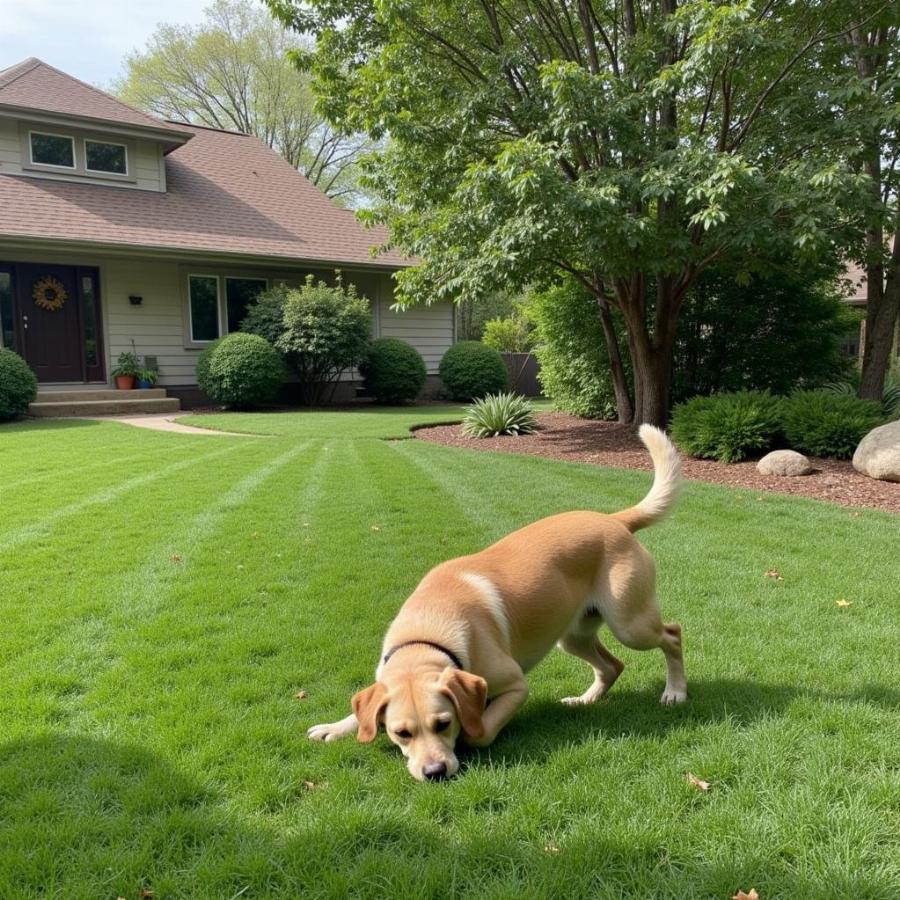Flies buzzing around your beloved canine companion can be more than just annoying. They can transmit diseases, cause skin irritation, and even lead to infections. Finding the right dog fly repellent is crucial for maintaining your dog’s health and comfort, especially during warmer months. This article will delve into the world of dog fly repellents, providing you with the information you need to choose the best protection for your furry friend.
Understanding the Need for Dog Fly Repellent
Why is a dog fly repellent necessary? Flies aren’t just a nuisance; they can pose serious health risks to your dog. Certain flies can transmit diseases like leishmaniasis, a potentially fatal parasitic disease. Additionally, constant fly bites can lead to skin inflammation, hot spots, and secondary infections. A quality dog fly repellent acts as a protective barrier, minimizing these risks and ensuring your dog’s well-being.
Choosing the Right Dog Fly Repellent: Natural vs. Chemical
There are two main categories of dog fly repellents: natural and chemical. Natural repellents often utilize essential oils like citronella, lavender, and eucalyptus, known for their insect-repelling properties. These are a good option for owners seeking a gentler approach. Chemical repellents, on the other hand, typically contain pyrethrins or permethrins, which are synthetic insecticides. While generally safe for dogs when used as directed, it’s important to follow the instructions carefully and consult your veterinarian if you have any concerns. natural fly repellent for dogs offers a deeper dive into natural options.
What if my dog licks the repellent?
If your dog licks a small amount of a properly applied repellent, it’s unlikely to cause serious harm. However, excessive ingestion can lead to gastrointestinal upset. Choose a repellent specifically formulated for dogs and apply it according to the instructions. best fly repellent for dogs provides a list of safe and effective options.
Application Methods: Sprays, Wipes, and Collars
Dog fly repellents come in various forms, including sprays, wipes, and collars. Sprays offer targeted application and are ideal for protecting specific areas. Wipes are convenient for quick touch-ups and are especially useful for cleaning around the face and ears. Collars provide continuous protection and are a good choice for dogs who spend a lot of time outdoors. repellent for flies on dogs explores these application methods in more detail.
How often should I apply dog fly repellent?
The frequency of application depends on the type of repellent and the manufacturer’s instructions. Some sprays may need to be reapplied every few hours, while collars can provide protection for several weeks. Always follow the product label for guidance.
Preventing Fly Infestations Around Your Home
Besides using repellents, minimizing fly populations around your home is crucial for effective fly control. Regularly cleaning up dog waste, removing standing water, and properly disposing of garbage can significantly reduce fly breeding grounds.
 Phòng ngừa ruồi cho chó cảnh
Phòng ngừa ruồi cho chó cảnh
Leishmaniasis: A Serious Concern
Leishmaniasis is a parasitic disease transmitted by sandflies that can be fatal to dogs. While not all flies carry this parasite, it’s important to be aware of the risks and take preventative measures, including using a dog fly repellent. leishmaniasis disease in dogs provides comprehensive information about this disease.
Conclusion
Protecting your dog from flies is a vital part of responsible pet ownership. By choosing the right dog fly repellent and implementing preventative measures, you can keep your furry friend safe, comfortable, and free from these pesky pests. Remember to consult your veterinarian if you have any concerns about choosing or using a fly repellent for your dog.
FAQ
-
Are natural dog fly repellents as effective as chemical ones? While natural repellents can be effective, their potency and duration may vary.
-
Can I use human insect repellent on my dog? Never use human insect repellent on your dog, as many contain ingredients toxic to them.
-
What should I do if my dog shows signs of an allergic reaction to a fly repellent? Discontinue use immediately and contact your veterinarian.
-
Can flies harm my dog’s eyes? Yes, flies can irritate a dog’s eyes and potentially transmit infections.
-
Are there any home remedies for dog fly repellent? Some home remedies exist, but their effectiveness is not scientifically proven. It’s best to use a commercially available dog fly repellent.
-
Can my dog eat bugs? While some bugs are harmless, others can be toxic or carry parasites. should dogs eat bugs provides further information.
-
What are the signs of leishmaniasis in dogs? Signs can include skin lesions, hair loss, weight loss, and lethargy.
Beaut Dogs is your trusted source for all things dog-related. We provide comprehensive information on dog breeds, care, health, and much more. For personalized advice and support, contact us at Email: [email protected]. https://beautdogs.com We’re here to help you navigate the wonderful world of dog ownership!